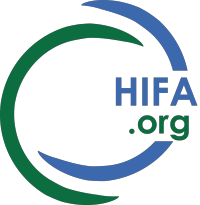Dear HIFA colleagues,
This paper (below) is highly relevant to our discussion. Their focus is on community health workers and in the full text they note that 'Smart-phone ownership [among CHWs] was more widespread in Ghana (90%) and Malawi (70%) than in Ethiopia (40%), where there was also marked urban–rural variation'.
Citation, highlights and abstract below. I have invited the authors to join us.
CITATION: Informal mhealth at scale in Africa: Opportunities and challenges
Kate Hampshire et al.
World Development, Volume 140, April 2021, 105257
https://www.sciencedirect.com/science/article/pii/S0305750X20303843
HIGHLIGHTS
• Community health-workers across Africa use mobile phones ‘informally’ in their work.
• Informal mhealth is an emergent phenomenon, used to bridge gaps in formal provision.
• Informal mhealth is happening at scale, far outstripping its formal equivalent.
• Informal mhealth is inherently responsive to local needs and contingencies.
• But it carries hidden costs (financial and other) which are inequitably distributed.
ABSTRACT
The extraordinary global growth of digital connectivity has generated optimism that mobile technologies can help overcome infrastructural barriers to development, with ‘mobile health’ (mhealth) being a key component of this. However, while ‘formal’ (top-down) mhealth programmes continue to face challenges of scalability and sustainability, we know relatively little about how health-workers are using their own mobile phones informally in their work.
Using data from Ghana, Ethiopia and Malawi, we document the reach, nature and perceived impacts of community health-workers’ (CHWs’) ‘informal mhealth’ practices, and ask how equitably these are distributed. We implemented a mixed-methods study, combining surveys of CHWs across the three countries, using multi-stage proportional-to-size sampling (N = 2197 total), with qualitative research (interviews and focus groups with CHWs, clients and higher-level stake-holders). Survey data were weighted to produce nationally- or regionally-representative samples for multivariate analysis; comparative thematic analysis was used for qualitative data.
Our findings confirm the limited reach of ‘formal’ compared with ‘informal’ mhealth: while only 15% of CHWs surveyed were using formal mhealth applications, over 97% reported regularly using a personal mobile phone for work-related purposes in a range of innovative ways. CHWs and clients expressed unequivocally enthusiastic views about the perceived impacts of this ‘informal health’ usage. However, they also identified very real practical challenges, financial burdens and other threats to personal wellbeing; these appear to be borne disproportionately by the lowest-paid cadre of health-workers, especially those serving rural areas.
Unlike previous small-scale, qualitative studies, our work has shown that informal mhealth is already happening at scale, far outstripping its formal equivalent. Policy-makers need to engage seriously with this emergent health system, and to work closely with those on the ground to address sources of inequity, without undermining existing good practice.
Neil Pakenham-Walsh, Global Coordinator HIFA, www.hifa.org neil@hifa.org
Working in official relations with WHO
Joint Coordinator, HIFA mHEALTH-INNOVATE
https://www.hifa.org/dgroups-rss/mhealth-innovate-1-what-can-we-learn-he...

